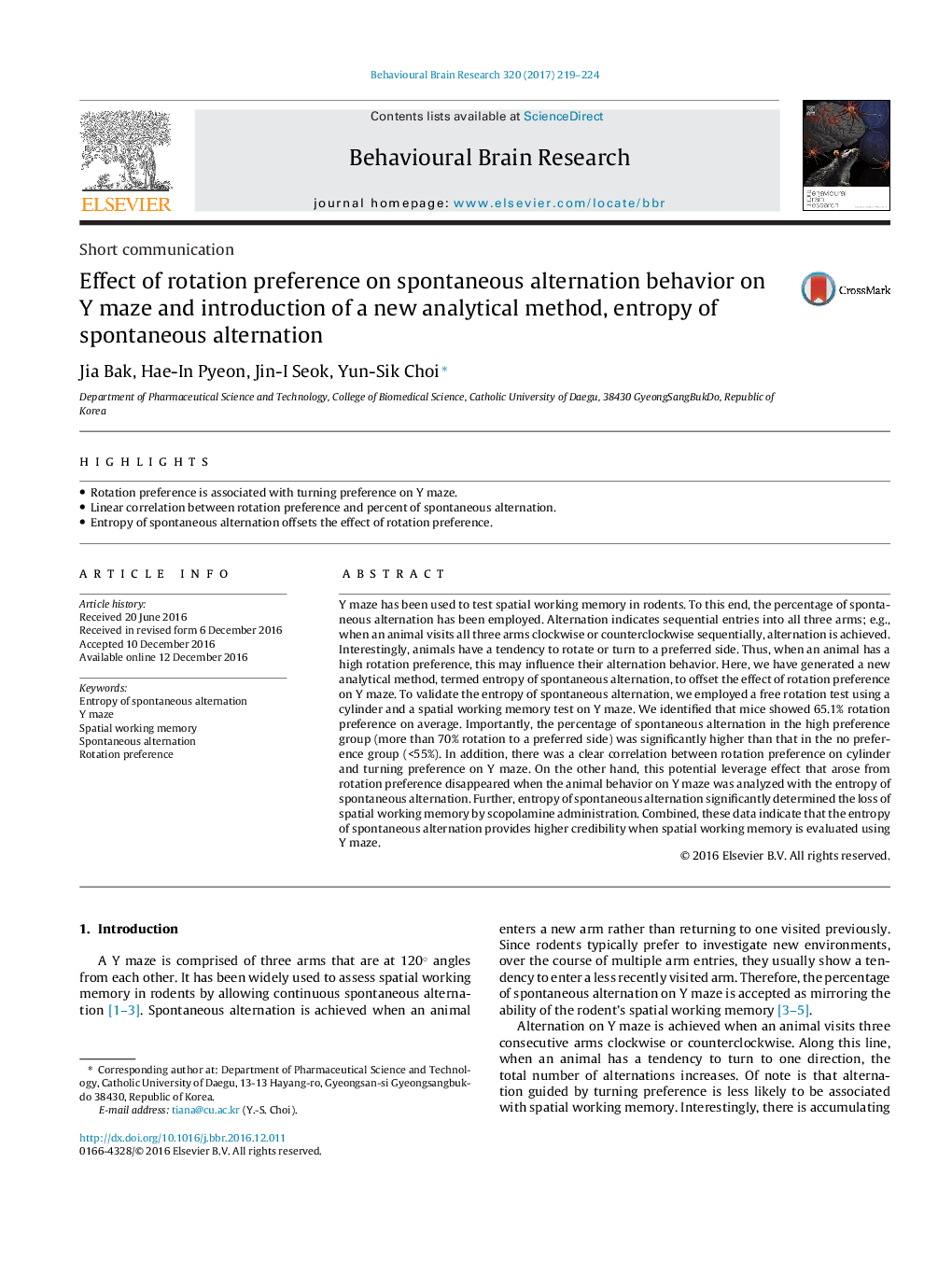| Article ID | Journal | Published Year | Pages | File Type |
|---|---|---|---|---|
| 5735680 | Behavioural Brain Research | 2017 | 6 Pages |
â¢Rotation preference is associated with turning preference on Y maze.â¢Linear correlation between rotation preference and percent of spontaneous alternation.â¢Entropy of spontaneous alternation offsets the effect of rotation preference.
Y maze has been used to test spatial working memory in rodents. To this end, the percentage of spontaneous alternation has been employed. Alternation indicates sequential entries into all three arms; e.g., when an animal visits all three arms clockwise or counterclockwise sequentially, alternation is achieved. Interestingly, animals have a tendency to rotate or turn to a preferred side. Thus, when an animal has a high rotation preference, this may influence their alternation behavior. Here, we have generated a new analytical method, termed entropy of spontaneous alternation, to offset the effect of rotation preference on Y maze. To validate the entropy of spontaneous alternation, we employed a free rotation test using a cylinder and a spatial working memory test on Y maze. We identified that mice showed 65.1% rotation preference on average. Importantly, the percentage of spontaneous alternation in the high preference group (more than 70% rotation to a preferred side) was significantly higher than that in the no preference group (<55%). In addition, there was a clear correlation between rotation preference on cylinder and turning preference on Y maze. On the other hand, this potential leverage effect that arose from rotation preference disappeared when the animal behavior on Y maze was analyzed with the entropy of spontaneous alternation. Further, entropy of spontaneous alternation significantly determined the loss of spatial working memory by scopolamine administration. Combined, these data indicate that the entropy of spontaneous alternation provides higher credibility when spatial working memory is evaluated using Y maze.
